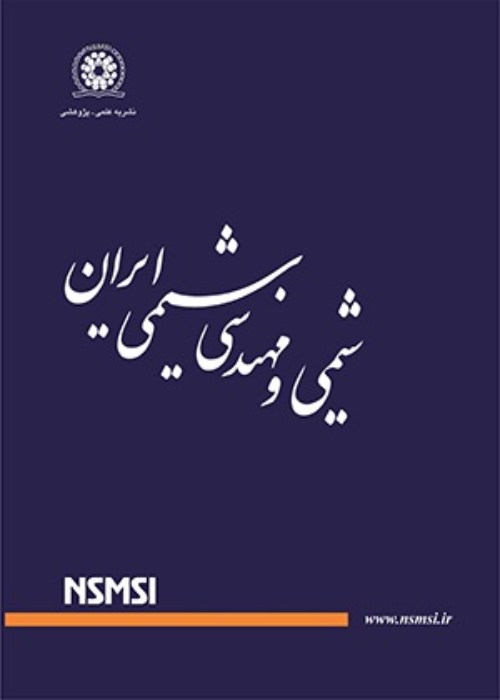Extraction and Determination of Folic Acid in Fortified Breads
Author(s):
Abstract:
Occurrence of iron deficiency in different age groups in population of Iran shows the importance of food fortification by iron and Folic Acid (FA). Cereals especially wheat are the most suitable tool for fortification aims due to their majority in Iranian diet. On the other hand, determination of material concentration after fortification is necessary to inhibit overdose. Folic acid measurement in complex matrix of bread (particulary in very low concentration of ppm or mg/L) needs to set up of special analytical method for extraction from flour and bread also preconcentration of FA. In this research, measurement of FA content in fortified bread samples by HPLC system was conducted. Optimization of separation conditions in HPLC system for identification of folic acid was conducted by change of several reagent concentration (%v/v) to obtain optimum retention time of FA peak. To preconcentration of FA (from ppb to ppm level), three preparation methods including solid phase extraction, extraction with magnetic nano-particle and Hollow Fiber Liquid Phase Microextraction (HF-LPME) (two and three phase modes) were evaluated. Based on obtained results two phase HF-LPME was selected. Optimization of separation by HF-LMPE with various solvents (n-octanol, n-hexanol, dodecan, isobutyl methyl ketone and benzyl alcohol) containing 10% w/v Aliquate 336 showed that octanol causes the maximum extraction efficiency. In this research effects of pH and time on efficiency of extraction were evaluated. Results show that pH=8 increases extraction efficiency. Also, by increasing time up to 45 min extraction efficiency was increased and then by further increase of time was decreased due to solvent loosing. Enrichment factor on the base of calibration curve slope with and without pre-condensation was calculated and 69 obtained. Extraction efficiency was calculated by enrichment factor and 3.5% was obtained. Spike method was used for confirmation of data accuracy. Also, FA preconcentration and separation was done in one hour. Samples (after texture degradation, extraction, separation and condensation) were injected to HPLC for concentration determination. Content of folic acid in bread samples was in the range of 0.3-1.0 mg/g with average of 5.9 mg/g bread, while the added ep�" inp� �5� in one hour. Samples (after texture degradation, extraction, separation and condensation) were injected to HPLC for concentration determination. Content of folic acid in bread samples was in the range of 0.3-1.0 mg/g with average of 5.9 mg/g bread, while the added concentration of folic acid to wheat flour was 1.5 mg/g. This difference is due to long time after bread preparation or temperature and time of cooking phase. Spike method confirmed the accuracy of data by error less than 10%. Resulted approaches from this research were evaluation of fortification efficiency, as well as set up of an accurate analytical method for extraction, preconcentration and determination of folic acid content in the range of mg/g in bread matrix for the first time in I.R. Iran.
Keywords:
Language:
Persian
Published:
Iranian Journal of Chemistry & Chemical Engineering, Volume:32 Issue: 3, 2014
Page:
1
magiran.com/p1244295
دانلود و مطالعه متن این مقاله با یکی از روشهای زیر امکان پذیر است:
اشتراک شخصی
با عضویت و پرداخت آنلاین حق اشتراک یکساله به مبلغ 1,390,000ريال میتوانید 70 عنوان مطلب دانلود کنید!
اشتراک سازمانی
به کتابخانه دانشگاه یا محل کار خود پیشنهاد کنید تا اشتراک سازمانی این پایگاه را برای دسترسی نامحدود همه کاربران به متن مطالب تهیه نمایند!
توجه!
- حق عضویت دریافتی صرف حمایت از نشریات عضو و نگهداری، تکمیل و توسعه مگیران میشود.
- پرداخت حق اشتراک و دانلود مقالات اجازه بازنشر آن در سایر رسانههای چاپی و دیجیتال را به کاربر نمیدهد.
In order to view content subscription is required
Personal subscription
Subscribe magiran.com for 70 € euros via PayPal and download 70 articles during a year.
Organization subscription
Please contact us to subscribe your university or library for unlimited access!



